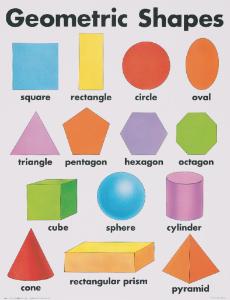

You can also extend this activity outside of the home. While they go on their shape hunt, they might want to snap some photos of the shapes they find, or draw them on a piece of paper. Talk about the number of sides each one has. How many shapes can they find in all? How many circles? How many squares? How many rectangles? Perhaps there’s a special triangle-shaped window in your home! For example, did they ever notice that heir bed is a giant rectangle? The paper plates in the cupboard are perfect circles! The mirror might be an oval. Then, invite them to discover a specific shape in the different items your home. How many can your little one think of? Help them come up with a manageable list of 3-5 shapes. To start your Shape Hunt, ask your child to first tell you about all the shape names they know about. During a shape scavenger hunt, your child will begin to see shapes within real objects in your home.

Scavenger Hunts are always an exciting way to learn about a new concept. Y ou’ll also find FREE PRINTABLES of shape worksheets at the bottom of this post!įind shapes around you home in windows, doors, beds, and more. Note to teachers: If you are a preschool teacher, these hands-on activities would be perfect for a math center! Kids can complete them individually or in a small group.įor your convenience, there are affiliate links in this post. These activities focus on improving your child’s understanding of shapes that are 2d (two dimensional), but as your child gets older you can incorporate a discussion about 3d shapes, too. The shapes activities you find here are perfect for 3-5 year olds, and perhaps will extend beyond those age boundaries depending on your child. Without further ado, here are 35 super-simple themed activities to practice shapes with your preschooler. That is, it helps your child understand how things fit together.įinally, manipulating 2d shapes helps little learners develop fine motor skills over time. Learning shapes helps develop another very important skill: spatial awareness. So, essentially, shape activities are also math activities for very young children. When your child learns to discern the similarities and differences between basic shapes, they are using the same early math skills they need to recognize the differences between numerals. There are many important benefits to learning about shapes:įirst, shape recognition and discerning shapes provides the building blocks for a strong foundation in mathematical reasoning. If you’re looking for a variety of simple, fun preschool shape activities, you’re in the right place! Whether you’re at home with a toddler, or teaching in a preschool classroom, these activities will fit the bill. Teaching shapes is a fun and productive way to spend your time at home, and it’s easy to incorporate into everyday life. Passing the time with a busy toddler or preschooler can be exhausting, and we can all use some fresh inspiration every now and then.


 0 kommentar(er)
0 kommentar(er)
